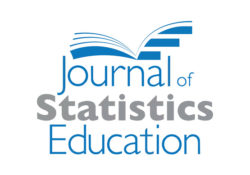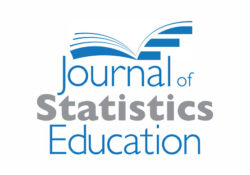tandfonline.com har udgivet en rapport under søgningen “Teacher Education Mathematics”: Abstract Formulae display:?Mathematical formulae have been encoded as MathML and are displayed in this HTML version using MathJax in order to improve their display. Uncheck the box to turn MathJax off. This feature requires Javascript. Click on a formula to zoom. Abstract We present an active-learning strategy for undergraduates that applies Bayesian analysis to candy-covered chocolate m&m’s®. The exercise is best suited for small class sizes and tutorial settings, after students have been introduced to the concepts of Bayesian statistics. The exercise takes advantage of the nonuniform distribution of m&m’s® colors, and the difference in distributions made at two different factories. In this paper, we provide the intended learning outcomes, lesson plan and step-by-step guide for instruction, and open-source teaching… Continue Reading →
Like this:
Like Loading...
tandfonline.com har udgivet en rapport under søgningen “Teacher Education Mathematics”: ABSTRACT ABSTRACT While various studies suggest that informal statistical inference (ISI) can be developed by young students, more research is needed to translate this claim into a well-founded learning trajectory (LT). As a contribution, this paper presents the results of a cycle of design research that focuses on the design, implementation, and evaluation of the first part of an LT for ISI, in which ninth-grade students (N = 20) are introduced to the key concepts of sample, frequency distribution, and simulated sampling distribution. The results show that an LT starting from repeated sampling with a black box may support the accessibility of these concepts, as these students were able to make inferences with the frequency distribution from repeated samples as… Continue Reading →
Like this:
Like Loading...

tandfonline.com har udgivet en rapport under søgningen “Teacher Education Mathematics”: Abstract Abstract Over the last two decades, statistics educators have made important changes to introductory courses. Current guidelines emphasize developing statistical thinking in students and exposing them to the entire investigative process in the context of interesting research questions and real data. As a result, many concepts (confounding, multivariable models, study design, etc.) previously reserved only for higher-level courses now appear in introductory courses. Despite these changes, causality is rarely discussed in introductory courses, except for warning students “correlation does not imply causation” or covering the special case of randomized controlled experiments. In this article, we argue causal inference concepts align well with statistics education guidelines for introductory courses by developing statistical and multivariable thinking, exposing students to many aspects… Continue Reading →
Like this:
Like Loading...
tandfonline.com har udgivet en rapport under søgningen “Teacher Education Mathematics”: Abstract Formulae display:?Mathematical formulae have been encoded as MathML and are displayed in this HTML version using MathJax in order to improve their display. Uncheck the box to turn MathJax off. This feature requires Javascript. Click on a formula to zoom. Abstract Basic knowledge of ideas of causal inference can help students to think beyond data, that is, to think more clearly about the data generating process. Especially for (maybe big) observational data, qualitative assumptions are important for the conclusions drawn and interpretation of the quantitative results. Concepts of causal inference can also help to overcome the mantra “Correlation does not imply Causation.” To motivate and introduce causal inference in introductory statistics or data science courses, we use simulated data… Continue Reading →
Like this:
Like Loading...



